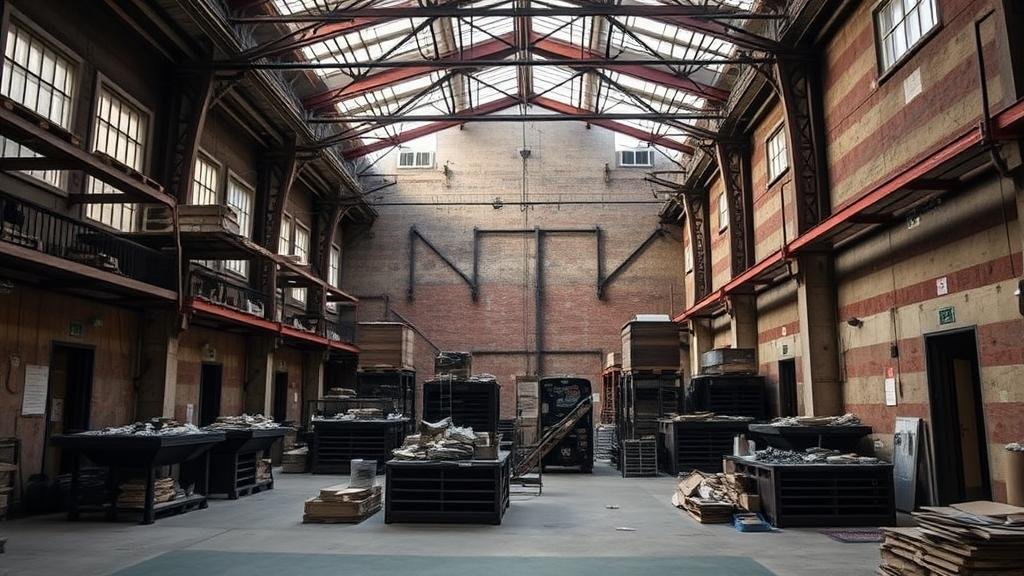Recovering Hidden Caches of Jewelry in Deserted Urban Warehouses
Recovering Hidden Caches of Jewelry in Deserted Urban Warehouses
The phenomenon of discovering hidden caches of jewelry in deserted urban warehouses is becoming an intriguing intersection of urban exploration and archaeology. As cities evolve and older industrial areas give way to new development, buildings often become forgotten, leaving behind relics of their past. This article delves into the methodologies, implications, and real-world applications of recovering these hidden treasures, particularly jewelry, which holds cultural, monetary, and historical significance.
The Appeal of Urban Warehouses
Urban warehouses, once the backbone of industrial production, have increasingly become sites of interest for urban explorers, historians, and treasure hunters alike. allure lies in their potential to house forgotten valuables, including jewelry. Factors contributing to the treasure trove of potential finds in these structures include:
- Depreciation of purpose leads to abandonment.
- Historical significance often transcends the economic value of buildings.
- Hoarding behaviors of previous occupants may result in unexpected discoveries.
For example, a 2019 excavation in a decommissioned textile factory in the Midwest revealed an array of vintage jewelry, tracing back to the early 1900s. Including pieces such asArt Deco brooches and estate rings, this find not only contributed to the understanding of local craftsmanship but also had a substantial auction value, highlighting how valuable these hidden caches can be.
Methodologies for Recovery
The process of recovering jewelry from abandoned warehouses involves well-planned methodologies. Explorers and researchers typically follow these steps:
- Initial Investigation: Utilizing archival research, including historical maps and documents, participants identify potential sites of interest. Additional online platforms may yield tips from local historians.
- Site Assessment: Conducting a thorough evaluation of the structural integrity and safety of the warehouse is paramount. Using technology such as drones for aerial imagery can help assess larger complexes.
- Excavation Techniques: The use of systematic digging and sifting techniques helps ensure that recovery is respectful and preserves the artifact’s context. Artifacts are typically cataloged meticulously.
One noteworthy example from Detroit illustrates successful recovery techniques. An urban archeology group uncovered an early 20th-century jewelry stores remnants in an abandoned warehouse, employing digital mapping tools to inform their excavation strategy. They managed to retrieve items ranging from antique pocket watches to precious gemstones, leading to the preservation of Detroits rich cultural heritage.
Legal and Ethical Considerations
When recovering hidden caches of jewelry, legal and ethical considerations must guide the exploration. Trespassing and ownership laws vary significantly by jurisdiction, necessitating that explorers remain aware of local regulations. Ethical considerations also dictate responsible recovery, ensuring artifacts are documented and handled with care to maintain their historical context.
- Property Rights: Prior to any exploration, permissions from property owners must be sought, as unauthorized access can lead to legal repercussions.
- Artifact Management: Artifacts should be reported to local historical societies or museums whenever appropriate to ensure proper conservation and public accessibility.
A case study from Chicago highlights the importance of legal adherence. After discovering a hidden cache of jewelry in an abandoned warehouse, the recovery team held discussions with the property owner and local historian before proceeding. This collaborative effort resulted in a successful recovery that benefited both historical preservation and community engagement.
Real-World Applications and Implications
The recovery of jewelry from abandoned urban warehouses can have several far-reaching implications:
- Enhancement of local historical awareness and interest.
- Boosting the local economy through antique sales and tourism related to historical significance.
- Providing educational opportunities for communities regarding the cultural history of jewelry and craftsmanship.
A prime illustration of this can be seen in Philadelphia, where finds from an abandoned warehouse led to a temporary exhibit at the Philadelphia Museum of Art, featuring pieces sourced from known historical jewelry artisans. This initiative educated visitors on the citys industrial narratives while revitalizing interest in local history.
Actionable Takeaways
For those interested in exploring or recovering hidden caches of jewelry in deserted urban warehouses, several actionable takeaways can be derived:
- Conduct thorough research and establish a network with local historians to identify potential sites.
- Engage with property owners legally and ethically, obtaining necessary permissions before any exploration.
- Prioritize safety and document findings meticulously to preserve context and history.
To wrap up, recovering hidden caches of jewelry in deserted urban warehouses presents an exciting opportunity to unearth valuable historical artifacts while navigating the intricacies of urban exploration. By adhering to ethical practices and legal guidelines, explorers can contribute to a richer understanding of urban history and safeguard these treasures for future generations.



